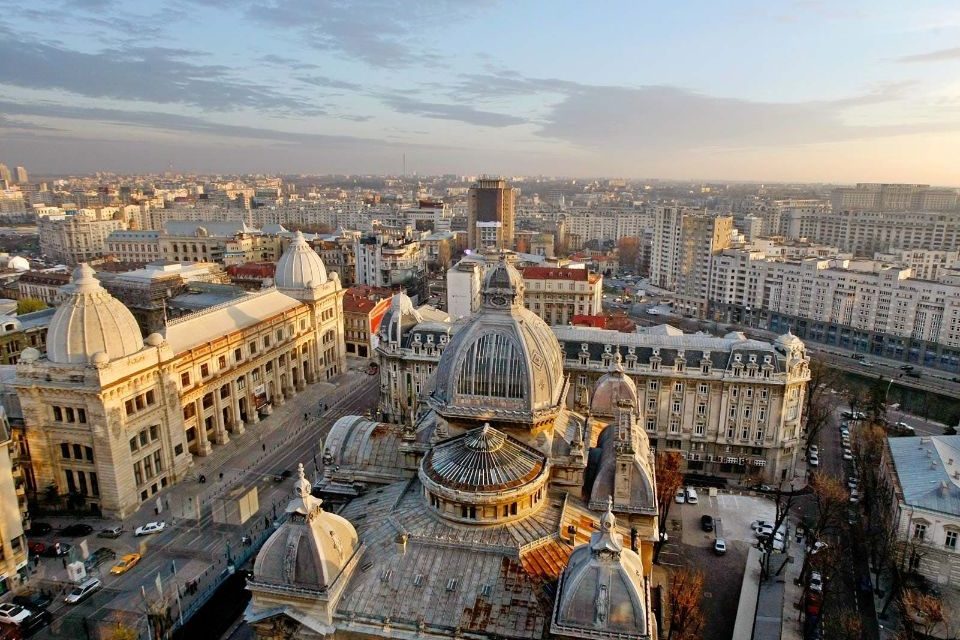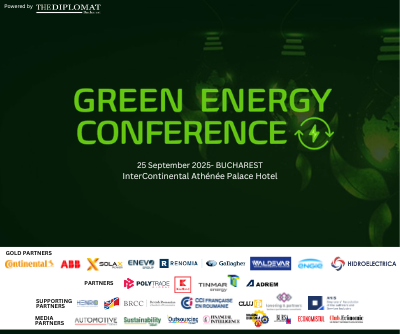Colliers: Economic growth below expectations in 2024, but a record year for retail, tourism and infrastructure

This year has been a mixed bag for Romania’s overall achievements and results, with both robust infrastructure activity, a strong recovery in real estate investments, and an economy that underperformed due to lower-than-expected GDP growth, according to Colliers consultants. While Bucharest’s office market experienced a relatively modest year, the retail sector saw record results, driven by a notable increase in consumption. The residential market delivered quite solid results, though signs of a supply shortage are emerging. The industrial market, after several record-breaking years, experienced a slowdown, while the tourism sector hit its highest levels in three decades, fueled primarily by local travelers.
“As we approach the launch of the <<Top 10 Predictions 2025>> report, reviewing this year’s developments provides an excellent opportunity to draw some conclusions and set the stage for the year ahead. Taking a broader view, many of the trends we see today were anticipated by Colliers consultants at the beginning of the year. Overall, 2024 can be described as a mixed but relatively solid year for many property sectors. Significant progress in infrastructure, combined with a recovery in real estate transactions – particularly in retail and industrial transactions- stands out as positives. At the same time, general economic challenges have posed difficulties for other segments”, notes Laurențiu Lazăr, Managing Director at Colliers România.
Romania’s economy has fallen short of expectations, note Colliers consultants, who initially predicted a promising local economic scenario for 2024 that ultimately failed to materialize. Following a 2023 marked by optimism and favorable indicators, such as job creation, early 2024 forecasts from most analysts projected GDP growth of around 3%. However, current estimates for 2024 barely exceed 1%, and even this figure seems increasingly challenging to achieve. While robust consumption has provided some support, it has not been enough to counter slowing capital expenditures and weak external demand. Job creation remains positive, but the pace has slowed significantly, raising concerns about potential difficulties in 2025.
“Romania faces major challenges: reducing the excessive budget deficit while at the same time correcting the external deficit. The necessary fiscal corrections will most likely include tax increases, but also adjustments in public spending. How these measures are implemented will have a significant impact on the country’s medium-term economic stability. This uncertainty at the end of this year dominates many discussions we are seeing in the market”, explains Silviu Pop, Director ECE & Romania Research la Colliers.
Although recent economic developments are less than favourable, progress in infrastructure provides a reason for optimism, as this offers serious support for GDP growth over the longer term. The year 2024 marks a significant milestone in this area, with the completion of more than 100 kilometres of high-speed roads. Additionally, nearly 1,500 kilometres of motorways and expressways are under construction or in various stages of preparation. Another key achievement is Romania’s accession to the Schengen air travel area. Towards the end of the year, we saw further encouraging news regarding the potential integration of land borders in 2025, which bolsters future development prospects.
Returning to real estate topics, Colliers accurately predicted that Bucharest’s office market would experience a year with minimal new deliveries and lower-than-expected leasing activity. In the first three quarters of 2024, no new office buildings were completed in the capital, marking the longest pause in deliveries since at least 2004 (as far back as the agency’s statistics go). The only significant project, bringing 16,000 square metres of new lettable space, is expected to be completed and handed over by the end of the year. Leasing activity was somewhat lackluster. While total demand remained broadly stable, driven primarily by renewals and relocations, new demand – which has a net positive impact on occupancy rates – stayed closer to post-pandemic lows and quite far from the pre-pandemic peaks of 2017-2018. On a more positive note, demand for green office buildings in prime locations was good. As such, the gap between well-positioned buildings and those failing to meet key tenant requirements – such as location, technical specifications, energy efficiency, and other critical criteria- has widened further.
Colliers’ forecasts for the retail market were optimistic, and the sector’s performance has confirmed the attractiveness of the Romanian retail market, which continues to draw new international players. Data available through autumn 2024 indicate an almost 14% increase in non-food sales (adjusted for inflation), marking a new all-time high for this index. A Romanian’s average actual individual consumption – which measures the actual volume of goods consumed rather than the amount spent – reached 89% of the EU average. This places Romania in the top half of the European ranking, ahead of countries like Spain, Poland, and Hungary. The growth in consumption, combined with high profit margins for local retailers and insufficient retail supply in some areas, has supported a strong pace of new deliveries. In 2024, retail developments exceeded the average annual trend since 2010, underscoring the retail sector’s significant contribution to the Romanian economy.
“Investment transactions in 2024 proved dynamic, surpassing our expectations and marking a significant rebound from the lows of 2023. Market activity was strong, with volumes comfortably higher than 700 million million euro by year-end. Based on transactions likely to close in Q4 or early 2025, this figure could increase substantially, nearly doubling the results of 2023.The industrial and retail sectors have dominated the market, but interest in office properties has also begun to recover. This renewed activity is highlighted by the transaction of the first prime office building in years”, highlights Laurențiu Lazăr.
Yields seem to have peaked in 2023-2024, indicating the potential for a downward path starting in 2025, assuming a stable and favourable economic environment. The year 2024 was also marked by robust financing activity. For instance, NEPI Rockcastle, Romania’s largest retail property owner, successfully raised over €600 million at the end of 2023 to refinance existing debt and fund new projects.
In the residential market, Colliers’ demand forecasts were largely accurate, but improved affordability failed to materialize due to the current high-interest rate environment and reduced supply. Despite these challenges, residential transaction activity remained resilient, even amidst global uncertainties. Housing purchase intentions, as measured by Eurostat surveys, remained close to record levels, comparable to the peak period of 2006-2008. This reflects a unique reality in Romania, which continues to have one of the highest rates of overcrowding in the European Union. However, building permits in Bucharest, the country’s largest residential market, have dropped significantly in recent quarters, reaching their lowest levels since 2014. This signals a potential reduction in future supply, which could drive up prices if demand remains strong.
Colliers’ forecasts for the industrial and logistics market have largely been accurate. Industrial leasing activity has remained strong throughout the year, which included some new names on the local market, with German developer Garbe among the more notable ones. However, after several years of record-breaking results, the latest data suggests that 2024 may see a slight underperformance. Rental growth pressures have eased, and rents have stabilized between €4.5 and €5 per square metre for prime built-to-suit projects ranging from 3,000 to 5,000 square metres with standard lease terms. Despite this, industrial market activity remains well above pre-pandemic levels. With ongoing infrastructure improvements and Romania’s historically low per capita stock of industrial space – 2-3 times lower than in Poland or the Czech Republic – 2024 is unlikely to mark the beginning of a downturn. Instead, it appears to be a pause year before the next wave of growth.
Last but not least, tourism reached its highest level in three decades in 2024. The local tourism market significantly surpassed its pre-pandemic peak, recording approximately 25 million overnight stays in hotels and similar establishments – the highest figure since 1991. This growth was primarily driven by domestic tourists, the majority traveling for leisure, while the number of foreign visitors – with most of these representing business travel before 2020 – has yet to return to pre-pandemic levels. As a result, investment in new accommodations remains strong, with an increasing emphasis on leisure destinations to cater to the rising demand from local travelers.















